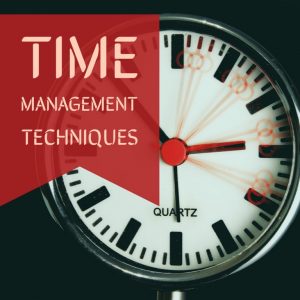As I wrap up my final few weeks of full-time employment, I find myself thinking about how to organize this amazingly blank slate of a schedule. Though I have certainly spent my fair share of time with a self-organized schedule, for the past seven years I’ve been teaching public school and have been locked into the “daily grind” with which we’re all familiar.
Benefits and Drawbacks of Fixed Schedules
It’s remarkable how teaching public school brainwashed me to respond to the school bell schedule. 8:50 am? Now I teach! 11:25? Eat!
All that is about to change for me with my plunge back into being an independent freelance dude, which is both exciting and scary. That externally imposed structure imparted by the school job is vanishing, leaving me alone with my thoughts, ideas, ambitions, and projects.
Great, right? Probably…
 Still, I can’t help envisioning myself in three months, gut hanging out over my sweatpants as I wake up at noon, watch Netflix until 4 pm, and play video games until 2 am.
Still, I can’t help envisioning myself in three months, gut hanging out over my sweatpants as I wake up at noon, watch Netflix until 4 pm, and play video games until 2 am.
I certainly know that Jason: lazy, distracted, and sloth-like. I’ve had more than a few summers that aren’t too far off from that.
Is that really how I want to spend my forties?
The Seduction of the Distraction
Being productive as a self-employed person is uniquely challenging. What should I be doing with my time?
I know–I’ll check some stuff on my phone!
- Texts
- Snapchat
- Blog Stats
- Podcast Stats
- Mailing List Stats
- App Downloads
Like most people, I can fall down the rabbit hole of clicking… clicking… checking one more thing… and one more…
Before I know it, 7 am has morphed into 10 am, and all I have to show for it are some Facebook likes and a couple of consumed BuzzFeed articles.
Once I actually sit down to work, I’m focused. In fact, I might go for hours without a break. I’ll finally stand up, back aching, and stagger over to the fridge for a snack.
This is the perfect moment to check more stats. It’ll be OK—just a quick dip into what’s going on online.
45 minutes later, I’ve totally lost my momentum. I sit back down in front of the computer, puzzled. What was I thinking about?
Sadly, I think that I’m actually better at focus than many I know. It’s a struggle, but one that I regularly overcome. I just hate that I go through that battle so frequently.
Free Time: A Blessing and a Curse
For years, I’ve been cramming blogging and podcasting into precious windows of free time—4 am before school, 11 pm after a gig, or a few moments before a concert started. I’ve spent lots of time in random corners of buildings, my car, or endless coffeeshops, furiously packing away at my laptop in the corner.
 This limited time has actually helped with my productivity. There’s sense of urgency to maximize my precious free time. A post or podcast simply wouldn’t get done if I didn’t use every precious second.
This limited time has actually helped with my productivity. There’s sense of urgency to maximize my precious free time. A post or podcast simply wouldn’t get done if I didn’t use every precious second.
Now, I’m about to have all the time I want. My wife will be at work during normal business hours. I’m going to treat my time like I have a “regular” job, only filling it with projects that I want to work on instead of heading to a full-time job.
Yay! And yikes! I can only hope that “Netflix Jason” isn’t the ultimate result.
Looking at Time Management Techniques
I am obviously not the first person to think about time management. Here are a few examples of techniques I’ve previously explored:
Merlin Mann and Inbox Zero
I have followed along with Merlin Mann for years.
"You're enjoying life wrong," explained the internet.
— Merlin Mann (@hotdogsladies) February 16, 2016
Merlin is a time management and productivity guru (and also happens to be immensely entertaining). He inspired me to move to inbox zero several years ago after spending far too long with with 3000+ messages in my inbox. This system has reduced my stress, increased my productivity, and cleaned up my workflow.
Internet Restriction Apps
I’ve thought about using Internet restriction apps in the past but haven’t pulled the trigger on any yet. Maybe I will once I move out to San Francisco. It seems like a good idea.
What I have done is turn off all notifications from all sources when I’m working. No phone pings. No laptop pop-ups. Those interruptions kick me out of whatever I was working on and into distraction land.
Momentum for Chrome
I have found the Momentum Chrome extension to be helpful when working online. Opening a new tab and seeing bookmarks and recently visited sites is like offering a chocoholic a box of Godiva goodies. The Momentum extension shows a peaceful scene from nature, an inspiring quote, and a field where you can enter your primary focus for the day. It’s simple and effective, and it has helped with my distractibility.
Create Content in the Morning and Tackle Tasks in the Afternoon
This isn’t an app but a strategy that I like: when I have a full day to organize as I wish, I use the morning for creative tasks, saving the administrative stuff like returning emails, collecting data, and working on the website for the afternoon. I create best when I’m fresh, and actually making something in the morning energizes me for the rest of the day.
 My New Secret Weapon
My New Secret Weapon
I discovered the Pomodoro Technique a few months ago after hearing Gaelen McCormick talk about it, and it has had a huge effect on how I work. It’s simple to use and has been insanely effective for me.
- Pick a task.
- Set a timer for 25 minutes. This session is one Pomodoro.
- Work on that task and nothing else for those 25 minutes.
- Stop working when the timer goes off.
- Take a 5 minute break. Do not check email, Facebook, etc. Stretch, get a drink of water, and move around.
- Do another 25-minute session focused on one task.
- After four Pomodoro sessions, take a 30 minute break.
I love this system! It’s simple but provides a structure but can be endlessly tweaked to suit your needs.
- Writing
- Podcasting pre/post
- Video editing
- To-do list items
- Audio editing
- Blogging
- Other
The app syncs between my iPhone and MacBook, and I can view my work in a spreadsheet if I want to really geek out.
Why I Like This System
This system immediately clicked with me once I began using it. For me, 25 minutes is that sweet spot where I can really dig into something but not get burned out. That’s just about when I feel like it’s time to get a drink of water, a cup of coffee, or to do some stretching.
Focusing on one task for 25 minutes is actually quite achievable. The timer makes me acutely aware of those moments when my brain drifts. It’s amazing how frequently I start the timer, start thinking about something, and those 25 minutes have dwindled to 17 minutes! This system encourages efficiency of thought.
Ironically, the school at which I have taught for the last few years organizes their schedule in 25 minute increments. I hope that’s not why I identify so strongly with this technique! Probably just a coincidence…
Wait But Why did a great post visualizing the amount of time that we all are likely to have left on this planet using different graphic representations. It’s a really cool and thought-provoking read. Seeing the remainder of your life in little dots gives each day a feeling of urgency. The Pomodoro Technique provides me with that feeling of urgency. After all, time is a finite resource, and wasting it on stupid stuff like picking at my laptop case is all too easy.
The five-minute break give me time to do a quick pushup and plank mini-workout, go to the bathroom, get a drink of water, pet the cats, do some stretching, and walk around the place. I sit down back down feeling loose and focused, ready to dig into the next session.
I aim for 10 of these sessions a day (that’s what my app was set for, and it seems just about right to me). After those 10 sessions are done, I consider work done for the day. That’s when I go for a run, do some reading, or hang out with friends.
10 sessions? Really? I mean, that’s only five hours of work… actually more like four hours with all of those breaks. It doesn’t seem like a lot, does it?
Right…. but hang on. Think about what any given day of yours is really like. How many minutes of a day do you spent in 100% pedal-to-the-metal full focus mode? Honestly, what’s that number for you?
For me, I know that I’m getting way more done with this system than with my more meandering, all-consuming vaguely productive tech sessions. I can’t tell you how many days I’ve lost with vaguely unfocused Internet-based work. I end the day stressed and burned out, with nothing to show for it.
What About the Rest of the Day?
I’m still working on this, honestly. I’ll probably keep working on it for weeks, months, and years (kind of like practicing the bass).
My current thinking is that 10 Pomodoros is plenty. I go do something physical like going for a run or a long walk. I am currently not obligating myself toward any more work past those 10 Pomodoros.
It can be hard to get in those 10 sessions depending on what else if going on. It’s perfect for a blank day, but it makes no sense for my current school job and doesn’t work when I’m playing gigs all over the place. But man, it is so great for an unstructured day.
Frequently, I come back and feel inspired to do some more writing, podcasting, video editing, or something else creative like that. If I feel like I’m on a roll, I have been letting myself keep going, but without the Pomodoro timer. I love that little timer, but at a certain point I don’t want anything telling me when I need to take a break.
I’ll almost certainly be doing less of that once moving out to San Francisco sine I’ll be spending time with my wife (yay!). Right now I’m this lonely guy living in a hellhole with his cats. Working takes my mind out of my current living situation. It’s way better than Netflix by myself!
If I don’t feel like doing something creative, then I usually spend some time reading, doing some research online. I read up on cool places to visit in California. I dive into YouTube and find cool bass videos to put out on the blog. Sometimes I get some really good ideas in those leisurely end-of-day sessions, and I don’t have that anxious feeling of having wasted the day. It’s a good mental place for me.
More About the Pomodoro Technique
- The Pomodoro Technique: A 10-Step Action Plan For Increasing Your Productivity by Damon Zahariades
- The Pomodoro Technique: An Entrepreneur’s Guide to Mastering The Pomodoro Technique For Maximum Productivity by Tony Robson
I’d also love to hear about what you use to structure your time! Do you use the Pomodoro Technique? Something else? Let me know! You can leave a comment below or email me at doublebassblog@mac.com.
Bass News Right To Your Inbox!
Subscribe to get our weekly newsletter covering the double bass world.

I’ve done something similar with practice. Set a timer for a technique or excerpt move on when it goes off. It really helped me stay focused on the nitty gritty details and often I didn’t want to move on. Of course if I didn’t I would not practice other material and realize I’d blown 120 minutes on one technique. This would cause me to bomb the audition since I did not spend enough time playing x y or z. I have also looking into the stuff put out by “Live your Legend” Much more a a guided goals setting system. The most important thing I got out of that was to structure 3 big items a day and plan it out at the beginning of the week. As an orchestra director you know there are a million things to due. Field trips, contest, copies, emails. etc. By laying out the week and deciding 3 majors things to tackle each day helped me keep from overworking. It felt great to get those tasks done but also I tended to leave work earlier and have a life outside of the classroom. It seems less productive but energy and focus was up since it forced me to step away. This led to me getting the same amount of work done each week but I spent less time overall.
Cool man! I love techniques like these for organizing my work. It gives structure to potential chaos.